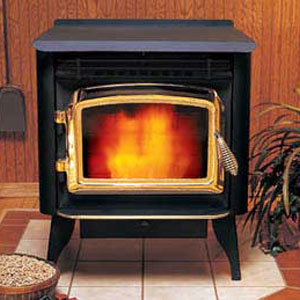pellet stove operation

Operating a pellet stove is straightforward once you have the basic knack. Start by reading the manufacturer's instructions and checking out any training material, such as a video, that is provided, and taking advantage of any hands-on demonstrations offered by the dealer or installer. It's a good idea to go through the process of firing up the stove for the first time with a some one who's knowledgable on hand.
Starting up a fire
Follow the steps in the owner's manual. If your stove has automatic ignition, all you have to do is push the start button to release pellets into the burn pot and trigger the self-igniter. If you have a manual ignition stove, you'll need to apply an approved gel or solid starter material (no liquids), light the pellets, and keep an eye on the fire to see that it catches and that the flame gradually spreads.
If the stove doesn't start properly
Modern stoves monitor startup and will shut off fuel to the burn pot if the operating temperature isn't reached after a certain amount of time. If the startup fails, make sure there's fuel in the hopper and that it's feeding properly, then try again. If the lighting cycle fails repeatedly, then maintenance or professional service is needed.
What to do after the stove starts
After making any adjustments to the control panel or air inlet and doing a quick performance check, the stove should be ready to give hours of steady heat. Stoves fitted with a remote wall thermostat respond to owner setting and room air temperature by cycling on and off or by cycling from a low to high burn.
Signs of performance problems
Properly operated and maintained pellet stoves generally have few problems. Most pellet stove operation is automatic, but sometimes you may need to adjust the amount of combustion air. A sooty, orange flame or dark smoke coming out of the vent, after startup and before shutdown), suggests the need for more air. An overly fierce flame means too much air is being supplied. Performance problems are more likely to be caused by neglected maintenance than by operation. Lazy flame, dark smoke, unusual sooting of glass, unexplained smoke spillage, and reduced heat output all point to the need for maintenance of appliance components and/or the venting system or for remedies for house depressurization. Problems related to mechanical failure usually result in safety switches shutting the appliance down. Appliance shutdowns may, however, indicate nothing more than owner forgetfulness (empty hopper) or hurry (improper startup), or intermittent power failure. Unexplained, repeated appliance shutdowns call for professional advice and service.
How to shut the stove down
Shutting the stove down is typically a matter of simply setting the control to the Off position according to operating instructions. The fuel feed stops delivering fuel right away, and after the stove cools sufficiently, all motors and blowers cease operation. The stove should NOT be shut down by unplugging the power cord.
What happens in an unexpected
shutdown such as a power outage or component failure? Although fuel feed stops in a power outage, the pellets in the burn pot may continue to burn or smolder. The duration of this condition can vary with appliance design from a few minutes to an hour or more. The resulting smoke and hot gases rise, seeking the path of least resistance. If the exhaust vent does not have vertical sections to provide natural draft, smoke may spill into the home.
